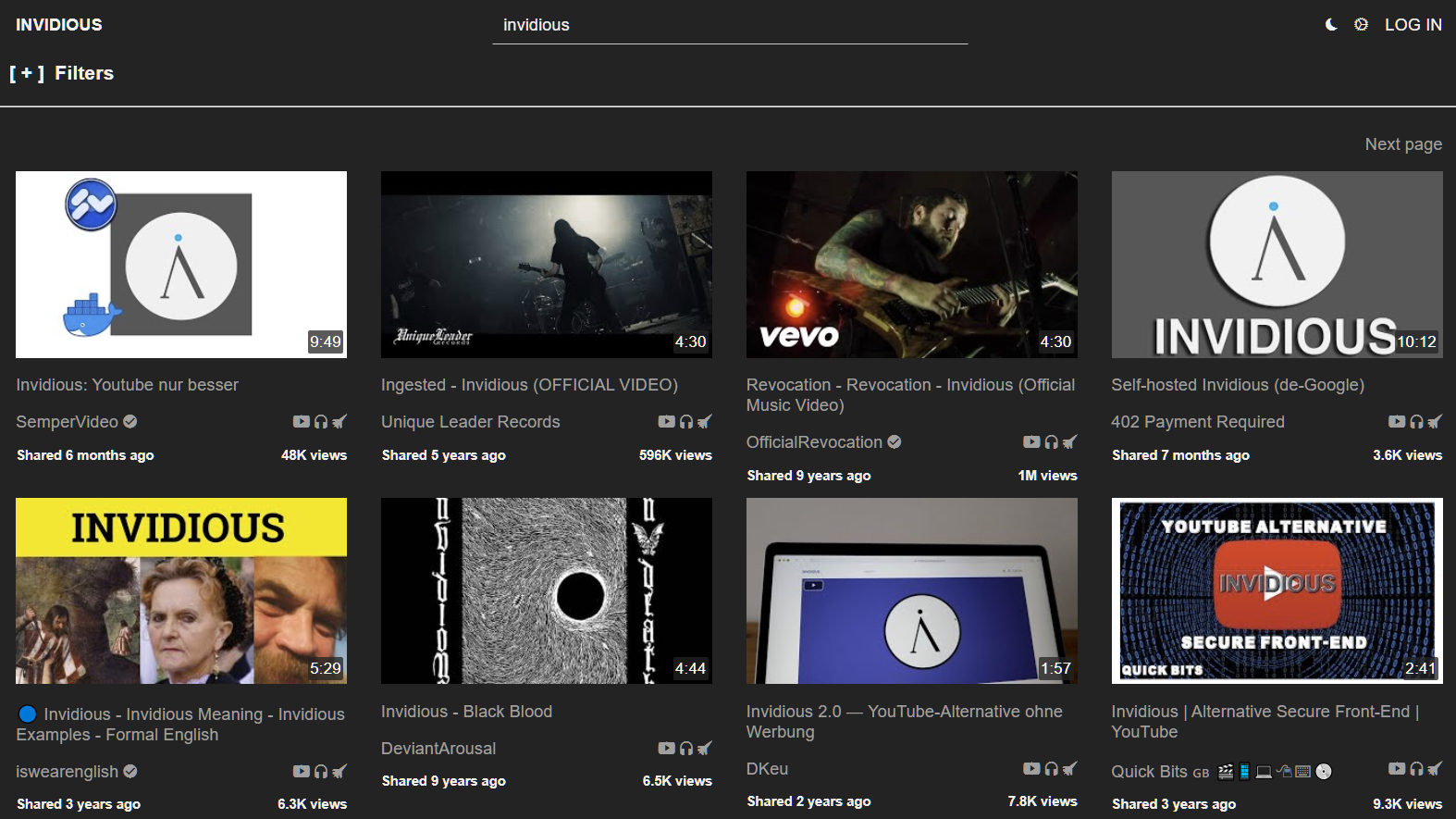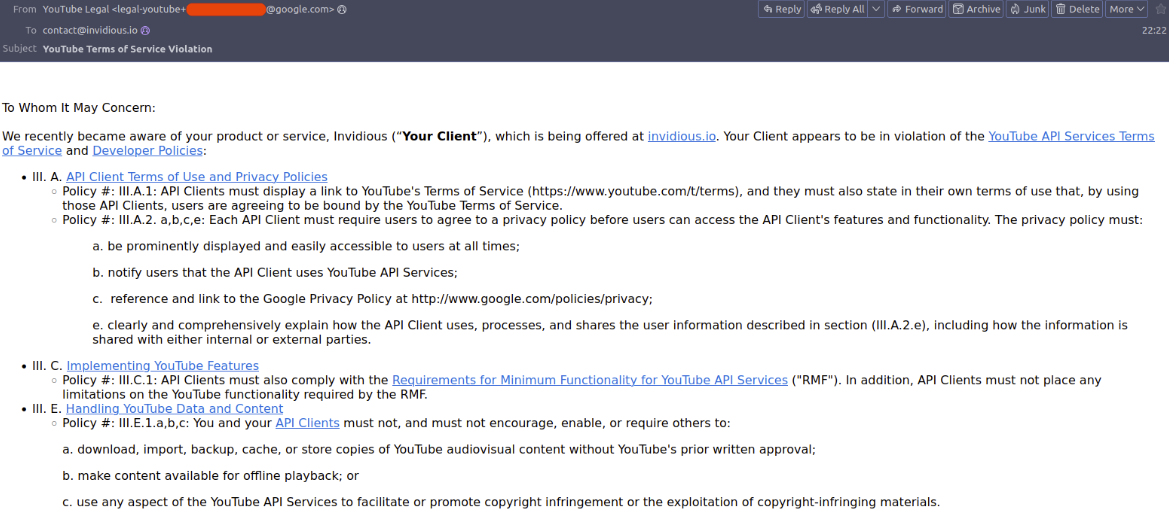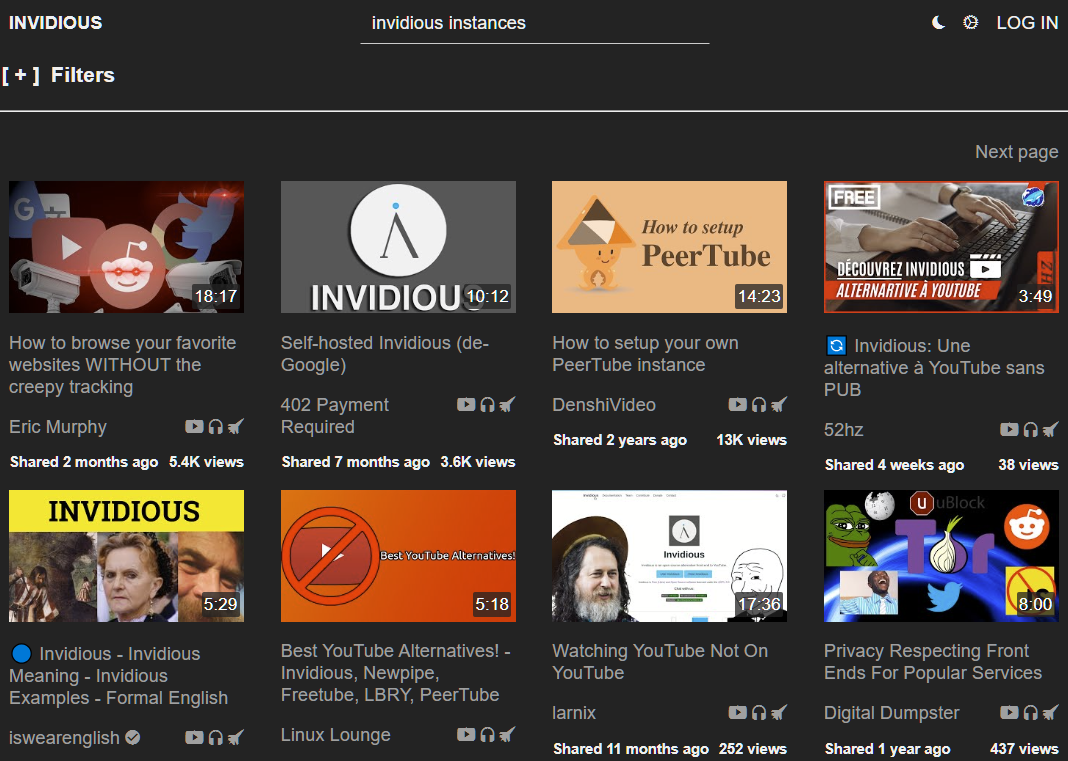 With an estimated 2.5 billion users overall and around 120 million users active daily, YouTube is an entertainment powerhouse and a globally-recognized brand.
With an estimated 2.5 billion users overall and around 120 million users active daily, YouTube is an entertainment powerhouse and a globally-recognized brand.
Premium products aside, YouTube is free to use. But with around a billion hours of content consumed every day, YouTube has to find ways to make that pay.
The most visible cost to the user is advertising, lots and lots of advertising. Less visible costs include significant user tracking, with an average of seven trackers per YouTube page, according to WhoTracksMe data.
With a growing subset of YouTube's users becoming more aware of how the platform is monetized, YouTube appears to be paying greater attention to those with a preference to opt out, whether that's through browser extensions like uBlock Origin or other methods that require even less effort.
Invidious: A Privacy Front-End For YouTube
Invidious describes itself as an open source alternative front-end to YouTube. In basic terms, this means accessing YouTube via a different interface on a different domain which strips away the advertising, user tracking, and reliance on Google subscriptions.
A Public Invidious Instance
The software is licensed under AGPL-3.0 and, for those with nominal technical skills, Invidious can be self-hosted on relatively modest hardware using Docker. For those who prefer just to use Invidious, there is no shortage of people happy to share their instances with the public.
How long that will continue is now up for debate.
YouTube Legal Orders Invidious to Shut Down
A few hours ago, the Invidious team revealed that YouTube's legal department had made contact, claiming to have become "recently aware" of breaches of YouTube terms of service agreements and developer policies.
The crux of YouTube/Google's claims is that clients (Invidious in this case) that use YouTube's API (application programming interface) must display and link to Google's privacy policy and "clearly and comprehensively" explain how their client uses and processes user information.

API clients must not "place any limitations" on YouTube functionality, or "mimic or replicate core user experiences" unless they add "significant independent value or functionality." Clients may not infringe copyrights or exploit copyright-infringing materials, Google adds. (1,2)
"We hope that you will cooperate with us by correcting and ceasing to Offer Your Client that violates our terms and policies within 7 days from the date of this letter," the shutdown notice concludes.
Invidious Team Feel Uncooperative
The main problems apparent in Google's cease and desist are straightforward; Invidious does not use YouTube's API, and as a result, the project's developers never agreed to any associated terms of service. As anyone who foolishly left their own instance open to the public will confirm, Invidious is effectively a proxy service, one with a penchant for bandwidth.
"[YouTube/Google] don't understand that we never agreed to any of their TOS/policies, they don't understand that we don't use their API," team member TheFrenchGhosty commented on GitHub.
"Things will continue normally until they can't anymore. Assume it's just the start. Assume they'll ask GitHub to takedown the repos (if so go to our Gitea https://gitea.invidious.io/iv-org). Assume the team wont be able to work on Invidious. You know what you have to do."
The team says they "won't do anything" unless they have to, but also acknowledge that this may not end well.
The cease and desist may not specifically apply due to its focus on YouTube's API but, since users of YouTube are also subjected to endless terms and conditions, finding a different angle won't be hard. If YouTube/Google really wants the Invidious team out of the picture, they are prepared for that, but disappearing their software will present a whole new set of challenges.
"May Invidious live and prosper, with, or without us," the team conclude.

From: TF, for the latest news on copyright battles, piracy and more.
No comments:
Post a Comment